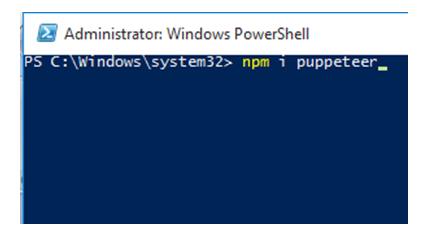
You should find Puppeteer executes successfully, provided proper Chrome flags are used.

Chrome will write into /tmp instead.Īdd your JavaScript to your container with a COPY instruction. disable-dev-shm-usage – This flag is necessary to avoid running into issues with Docker’s default low shared memory space of 64MB.Project URL RSS Feed Report issues Module Author Vox Pupuli puppet Module Stats 15,374,498 downloads 38,157 latest version 5.0 quality score Version information 9.0. Puppet Forge Home Modules puppet nodejs nodejs Install Node.js package and npm package provider.

If you’re uncomfortable with this, you’ll need to manually configure working Chrome sandboxing, which is a more involved process. Install Node.js package and npm package provider.It’s vital you ensure your Docker containers are strongly isolated from your host. Using these flags could allow malicious web content to escape the browser process and compromise the host. no-sandbox and disable-setuid-sandbox – These disable Chrome’s sandboxing, a step which is required when running as the root user (the default in a Docker container).Puppeteers download system does not seem to honor strict-ssl or NODETLSREJECTUNAUTHORIZED in the.

Setting this flag explicitly instructs Chrome not to try and use GPU-based rendering. Unless I set the NODETLSREJECTUNAUTHORIZED variable as zero separately before running npm install, it wont work. disable-gpu – The GPU isn’t usually available inside a Docker container, unless you’ve specially configured the host.


 0 kommentar(er)
0 kommentar(er)
